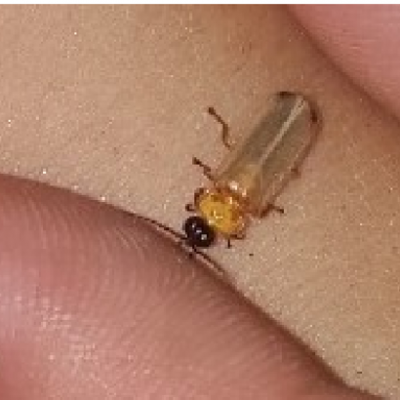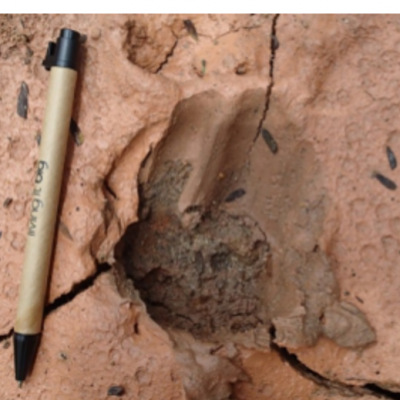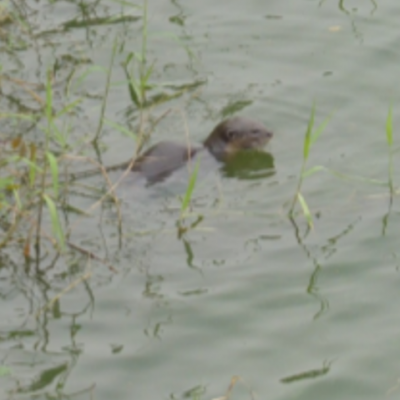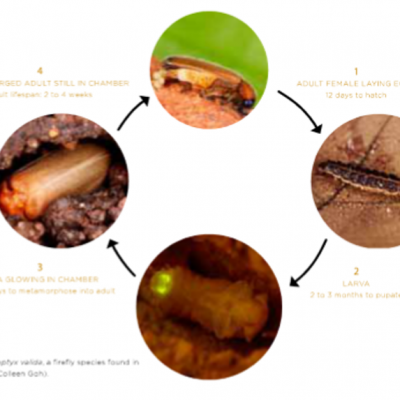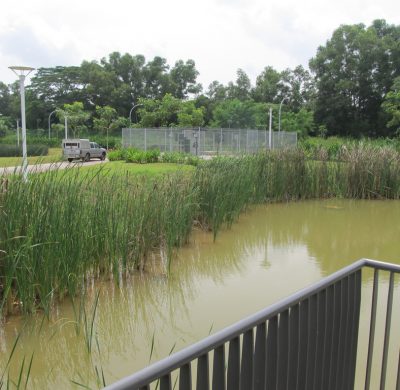
Overview
SECS was brought on to study the potential impacts of the road construction at Lorong Halus. There were two main challenges here: firstly, the road traversed an abandoned landfill, and landfill waste removed from the area had to be managed. Secondly, the surrounding area is rich in biodiversity, and any construction had to keep environmental impacts to a minimum.
The Lorong Halus area is a discontinued solid waste landfill site that has regenerated into a habitat rich in aquatic and terrestrial biodiversity. Lorong Halus also has several water bodies, namely the Halus Pond and Sungei Belukar, a natural stream that flows into Serangoon Reservoir. The proposed construction area was also near the Lorong Halus Wetlands, an established bio-remediation wetland system. A key concern was the mobilization of leachate and landfill gases caused by construction – when discharged into the surface drainage, these mobilized pollutants could adversely affect the aquatic ecosystem and affect reservoir water quality.
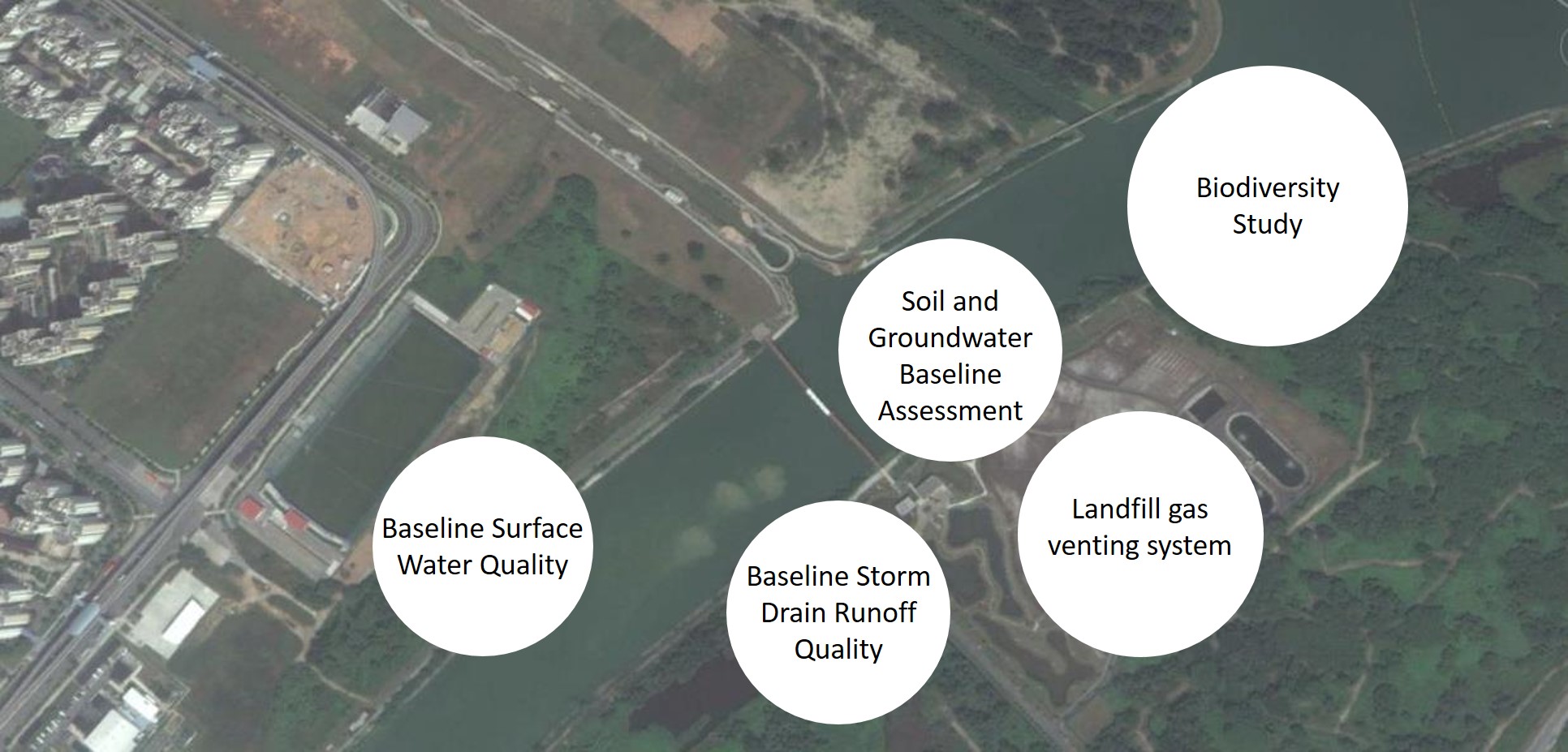
Our Approach
A two month study was conducted to establish the ecological baseline conditions and present adequate mitigation and monitoring measures to control ecological impacts to acceptable residual levels.
A team of qualified specialists surveyed and identified the flora and fauna species within the work boundary and the vicinity of the road expansion project.
An interesting finding of the ecological field survey was the record for the Synchronously Flashing Firefly species (pteroptyx validus) along the upper parts of the Sungei Blukar stream. Though no exact count was made, night surveys of the visible flashes of the firefly indicated presence of the insect in the hundreds. Formerly common in Singapore, pteroptyx validus is now registered as Endangered (Singapore Red Data Book, 2008), and has only been recorded at a single mangrove site in the Sungei Buloh Wetland Reserve.
Five species of birds with significant conservation status were also identified. These are the Baya Weaver (ploceus phillipinus; uncommon resident), Changeable Hawk Eagle (nisaetus cirrhatus; endangered), Little Grebe (tachybaptus ruficollis; critically endangered), Oriental Magpie-Robin (copsychus saularis; endangered), and Purple Heron (ardea purpurea linnaeus; endangered). The Changeable Hawk Eagle is of particular interest. Eagles, as one of the top predators in the food chain, are considered keystone species. Keystone species are species which play a critical role in balancing an ecosystem. In this case, the eagle is essential in the control of populations of rodents, snakes, and other animals. Without a keystone species, the ecosystem could undergo dramatic changes or collapse.
A total of 6 mammal species were also identified in the area, through methods including transects, point counts, bat detectors, and trapping. Some mammal species were also identified by tracks left on soft substrate. Apart from the common Asian House Rat (rattus tanezumi), we also identified wild boars, otters, and bat species.
The smooth-coated otter (lutrogale perspicillata) is the smaller of two species of otters found in Singapore. It has small forefeet with partially webbed, short-clawed and nimble fingers that enable them to dig up crabs and molluscs in the mud with great dexterity. A family of at least 8 such otters were identified along the edges of Serangoon Reservoir during our survey.
In Singapore, the Smooth-coated Otter is a rare sight and was recorded as critically endangered (Singapore Red Data Book, 2008). Habitat loss, human disturbance and trapping for the pet trade led to the decline of this amphibious mammal species.
Results
Six potentially significant biodiversity impacts were identified:
- Habitat loss (particularly the terrestrial and aquatic feeding/roosting grounds)
- Water quality in Serangoon Reservoir, Sungei Blukar and Lorong Halus Pond
- Reduced air quality by the release of landfill gases
- Noise causing fauna to flee from areas closest to road
- Light spill from roadside lighting causing nocturnal fauna to flee from areas closest to the road and disrupt breeding patterns
- Edge effects, barrier and avoidance, mortality due to traffic and predation
Two main impact mitigation strategies were proposed. Firstly, by minimizing pollutants’ impacts at source and reducing the influent to sensitive areas by best management practices (BMP) during construction. This includes technical intervention and solutions such as ultra-filtration for surface runoff and leachate treatment prior to discharge. Secondly, landscape mitigation measures could serve as credible compensation measures for the unavoidable loss of habitat. This would go beyond the usual tree planting along road corridors. The aim would be to restore disturbed habitat spaces and enhancing them, and this can be further completed by green infrastructure solutions for roadside drainage.
With respect to the Synchronously Flashing Firefly, we proposed mitigation strategies depending on whether the habitat would be either 1) preserved in-situ during construction, 2) restored after construction, or 3) translocated to another section of the Blukar River.
This species of firefly requires special habitat conditions to persist. In general, a firefly habitat can be divided into three main layers – vegetation cover for the adults, ground surface for the eggs and larvae, and the underground for the pupae. It is important to note that firefly larvae are vicious carnivores that feed mainly on snails, slugs, and earthworms. Therefore, a suitable habitat must be conducive to these species as well. There must be appropriate levels of decomposing matter (especially leaf litter and dead tree logs), as firefly larvae tend to avoid light during the day by resting under leaf litter, soil, and stones. The habitat must also have a cool ambient temperature, high humidity, and minimal to no light pollution. Any illumination of the tree canopy, vegetation fringe, and the surrounding areas could reduce the visibility of light emitted by the fireflies and interfere with mating rituals.
To safeguard the implementation of impact mitigation and the effectiveness of these measures, monitoring of sensitive ecological receivers was also recommended during and after the completion of the construction process for an estimated time frame of 46 months.

